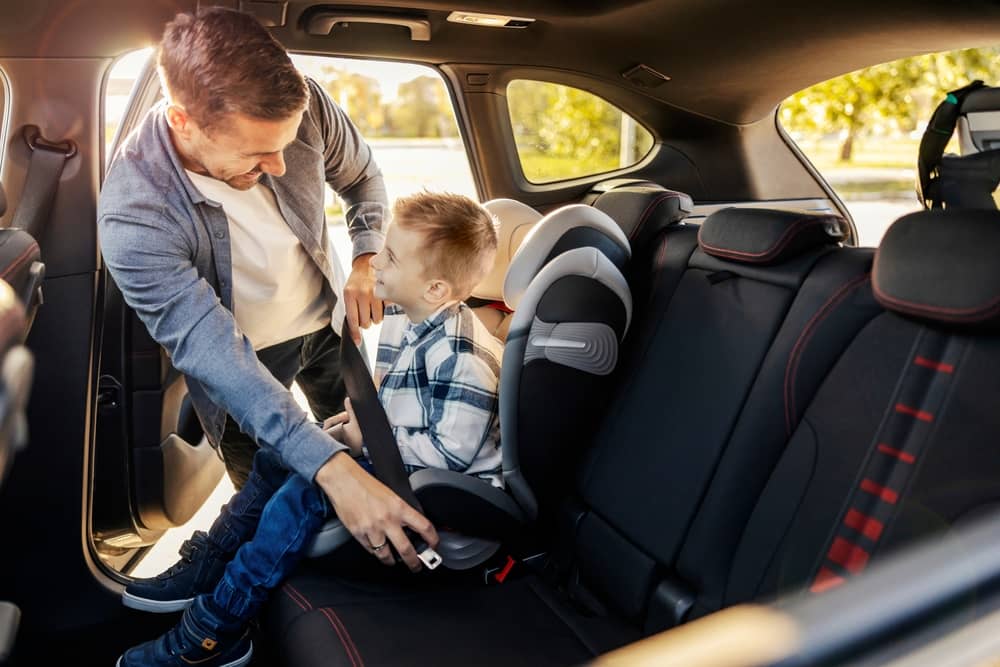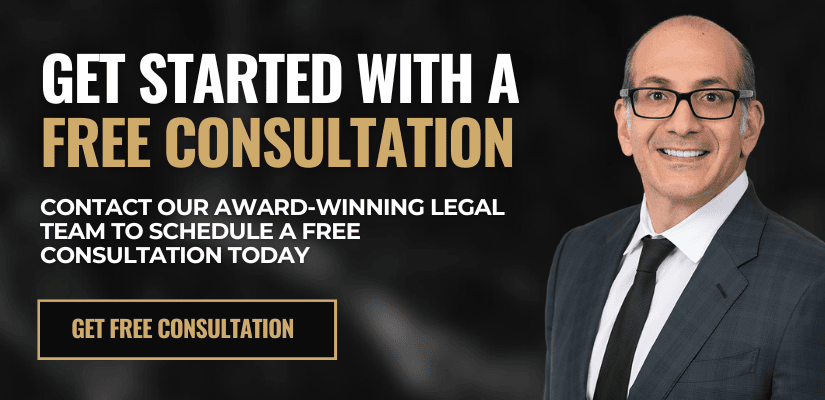Keeping your child safe in the car isn’t just about strapping them in—it’s about making sure they’re in the right seat for their age, height, and weight. Every year, children suffer serious injuries because they were in an improper car seat or transitioned too soon to a booster or seat belt. Many parents believe they’re following the rules, only to find out too late that their child wasn’t as protected as they thought.
Car crashes can happen in an instant, and without the right restraint, even a minor accident can lead to devastating consequences. It’s not just about safety—failing to comply with car seat laws can result in fines, legal trouble, and unnecessary risks for your child. The good news? Ensuring your child’s safety is easier when you understand the laws and follow expert recommendations.
This guide will walk you through everything you need to know about Nevada’s car seat laws, including age and size requirements, penalties for non-compliance, and what to do if a defective car seat puts your child at risk.

Overview of Nevada Car Seat Laws
Nevada car seat laws are designed to protect young passengers by ensuring they are secured in the appropriate child restraint system. Under state law, children under the age of six and weighing less than 60 pounds must be properly restrained in a federally approved car seat whenever they are in a moving vehicle. These car seat requirements aim to reduce the risk of serious injuries in the event of an accident.
Additionally, safety experts recommend that children under 13 years old sit in the back seat, where they are better protected from airbag-related injuries. Nevada’s car seat laws, outlined in NRS 484B.157, align with national safety guidelines to ensure children are restrained in the safest way possible. Parents and caregivers must also comply with booster seat requirements in Nevada, which help provide proper seat belt positioning for older children who have outgrown their forward-facing car seat but are not yet tall enough for a standard seat belt.
Related: Child Injury Attorney

Specific Car Seat Requirements by Age and Size
Nevada car seat laws outline specific car seat requirements based on a child’s age, weight, and height to maximize safety. Using the proper restraint system at each stage significantly reduces the risk of severe injuries in an accident. Below is a breakdown of the recommended and legally required car seat laws in Nevada.
Rear-Facing Car Seats
Infants and toddlers must be secured in a rear-facing car seat from birth until they reach the maximum height or weight limit set by the manufacturer. This position provides the best protection for a child’s developing neck and spine. Safety experts, including the Nevada Department of Motor Vehicles, recommend keeping children rear-facing for as long as possible to reduce injury risks in a crash.
Forward-Facing Car Seats
Once a child outgrows the rear-facing seat, they should transition to a forward-facing car seat with a five-point harness. Nevada car seat laws require that children remain in this type of seat until they reach at least 40 pounds or exceed the height limits. It’s safest to keep children in a forward-facing seat until they fully outgrow the manufacturer’s specifications.
Booster Seats
Booster seat requirements in Nevada mandate that children who have outgrown a forward-facing car seat must use a booster seat until they are at least six years old and weigh 60 pounds. However, experts recommend keeping children in a booster seat until they reach a height of at least 4’9″, ensuring the seat belt fits them properly. Booster seats help position the lap and shoulder belts correctly for maximum protection.
Seat Belts
Once a child outgrows a booster seat, they can transition to a seat belt, but it must fit properly. The lap belt should rest securely across the upper thighs, not the stomach, while the shoulder belt should cross the chest without touching the neck. Nevada car seat laws strongly encourage children under 13 to sit in the back seat to avoid airbag-related injuries. For more information on proper seat belt use, check out the Nevada DMV seat belt guide.
Exceptions to the Law
While Nevada car seat laws are strict to ensure child safety, there are certain exceptions where standard car seat requirements may not apply. However, these exemptions do not eliminate the need to prioritize child safety in every vehicle.
- Medical Exemptions: If a child has a medical condition that prevents the use of a standard car seat, parents or guardians must obtain a doctor’s note documenting the exemption. It’s essential to keep this documentation readily available in case of a traffic stop.
- Emergency Situations: In urgent situations where a proper car seat is unavailable, such as during medical emergencies or unforeseen circumstances, law enforcement may take the context into consideration. However, this does not exempt parents from ensuring proper restraints whenever possible.
- Taxis & Rideshare Vehicles: Nevada law does not require taxis, Uber, or Lyft drivers to provide car seats. Despite this, booster seat requirements in Nevada still hold parents and guardians responsible for securing their child in an appropriate restraint system. Carrying a portable booster or travel car seat is recommended when using these services.
Penalties for Non-Compliance
Failing to follow Nevada car seat laws can lead to serious consequences, not just legally but also in terms of child safety. Studies show that properly used car seats reduce the risk of fatal injuries by 71% for infants and 54% for toddlers in passenger vehicles. However, incorrect use or non-compliance with car seat laws can leave children vulnerable in the event of an accident.
Penalties for violating car seat requirements in Nevada include:
- First-time offenses: A fine of up to $500 or mandatory completion of a child safety seat education program.
- Repeat violations: Higher fines, potential community service, and possible points on a driver’s record.
- Injury-related non-compliance: If a child is injured due to improper restraints, parents or guardians could face additional legal consequences, including potential child endangerment charges.
Law enforcement officers actively enforce booster seat requirements in Nevada and other child restraint laws to ensure young passengers are adequately protected. Avoiding penalties is simple—make sure your child is secured in the right car seat for their age, weight, and height.
Defective Car Seats
Even when parents follow Nevada car seat laws and ensure their child is properly restrained, a defective car seat can still put them at serious risk. According to the National Highway Traffic Safety Administration (NHTSA), nearly 12 million car seats have been recalled in the past decade due to defects, including faulty harnesses, weak frames, and improper crash protection. These defects can reduce the effectiveness of a car seat in an accident, leading to preventable injuries.
Manufacturers are responsible for ensuring that their car seats meet strict safety and crash protection standards. If a company fails to design, produce, or test its car seats properly, it can be held liable for any harm caused. Parents who believe a defective car seat contributed to their child’s injuries may have legal grounds to pursue compensation for medical bills, pain and suffering, and other damages.

Need Legal Assistance?
Ensuring your child’s safety on Nevada roads is paramount, especially with the state’s specific car seat and booster seat regulations.
At Ladah Injury & Car Accident Lawyers Las Vegas, we specialize in car accident cases, including those involving car seats and booster seats. If you have questions about Nevada’s car seat laws or need assistance after an accident, our experienced attorneys are here to help.
Call (702) 252-0055 or contact us online to schedule a free consultation today.
Conclusion
In conclusion, ensuring your child’s safety in the car goes beyond simply using a car seat—it requires understanding and following Nevada’s car seat laws, which are designed to protect young passengers.
By using the appropriate restraint system based on your child’s age, weight, and height, you can significantly reduce the risk of injury in the event of a crash. However, it’s also important to be aware of defective car seats that can compromise safety.
If you believe a defective car seat has caused harm to your child, seeking legal guidance can help you pursue compensation and justice.
